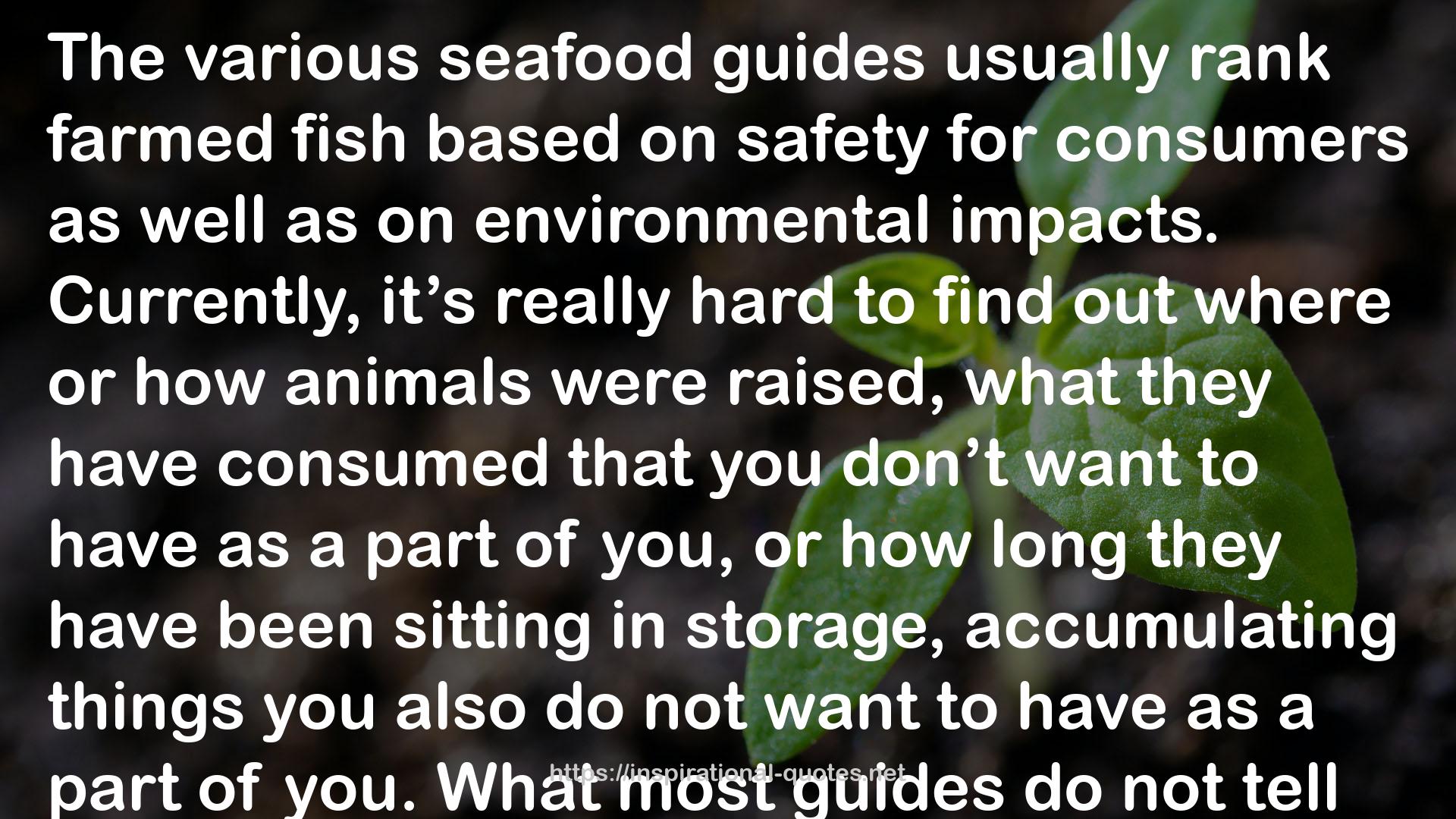" The various seafood guides usually rank farmed fish based on safety for consumers as well as on environmental impacts. Currently, it’s really hard to find out where or how animals were raised, what they have consumed that you don’t want to have as a part of you, or how long they have been sitting in storage, accumulating things you also do not want to have as a part of you. What most guides do not tell you is whether the fish are plant-eaters or carnivores, nor do you learn their likely age, and these things matter a lot for two reasons. The higher up the food chain, and the older the animal, the greater the concentration of contaminants: tuna, shark, swordfish, halibut, and in fact, most of the fish in the counter fit into this category. It takes a much greater investment from the ecosystem, pound for pound, to make a ten-year-old fish-eating tuna than a one-year-old plant-eating catfish. For those who want to eat low on the food chain with lowest risk of contaminants, farmed catfish, tilapia, carp, and certain mollusks are the best choices, but even so, it makes a difference where and how they were raised. "
― Sylvia A. Earle , The World Is Blue: How Our Fate and the Ocean's Are One
